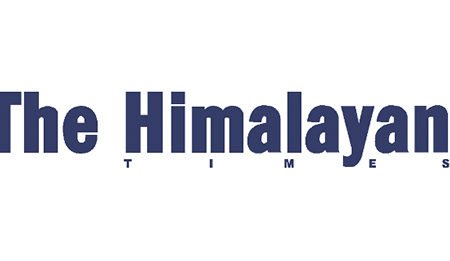EDITORIAL: Poor air quality
Switching to e-vehicles, shifting the brick kilns outside the Valley and abiding by the rules at construction sites are the ways to improve air quality
The Kathmandu Valley is one of the most polluted cities in the world. Smoke emitted by vehicles and factories, and dust particles emanating from construction sites are the major sources of air pollution. During the winter, the bowl-shaped Valley traps smoke and dust particles, which settle down just a few metres above the ground, increasing cases of respiratory diseases among the residents, especially among children and the elderly. When the winter season starts, doctors even advise Kathmanduites to avoid morning walks because of the suspension of smoke and dust particles in the lower atmosphere. While smoke belched out by the vehicles is a perennial problem, the dust particles blown in the atmosphere are a recent phenomenon due to ongoing construction of roads and laying of water pipelines in the Valley. A detailed study carried out by two US scientists way back in 1993 had concluded that vehicular emission was the main reason behind the air pollution in the Valley because, they observed, owners do not regularly carry out maintenance of their vehicles, which emit smoke into the atmosphere. Another reason behind the increasing amount of dust particles is the contractors’ non-compliance with the rules that require sprinkling of water at the construction sites to keep the dust particles from flying.
As we marked 35th World Environment Day yesterday, with “air pollution” as its theme, we need to ponder about improving the air quality of the Valley, home to almost four million people. According to a study by the Department of Environment in 2018, 68 per cent of petrol-run vehicles and 60 per cent of diesel-run vehicles, which are the major contributors of air pollution, had failed the emission test. The brick kilns in the Valley had also failed to limit concentration of suspended particulate matters at 350 micrograms per cubic metre (pcm). According to the government-set standard, concentration of particulate matters (PM2.5) above 40 micrograms per cubic metre is unsafe. However, monitoring at Pulchowk Tuesday morning recorded PM2.5 concentration of 47.958 pcm. It was also the same at other places. WHO has set PM2.5 concentration at 25 pcm.
Doctors have said frequent exposure to dust and smoke leads to accumulation of large amounts of these tiny particles in the lungs and blood, leading to respiratory ailments and, ultimately failure of the heart, kidneys and other vital organs. While PM2.5 concentration level in the Valley is very high, it has made some progress in limiting the Total Suspended Particles (TSP), the national standard of which stands at 120 microns pcm. This is more than double the standard set by the WHO. TSP concentration has, however, dropped in recent months due to the blacktopping of the roads dug for laying water pipelines and construction of Phase 1 of the Ring Road. Construction activities and transportation are the major contributors to air pollution followed by brick kilns in the Valley. One of the best ways to control air pollution in the Valley is to switch to electric vehicles and shift the brick kilns outside the city. All construction works should be carried out by strictly abiding by the government rules.
Coffee tourism
Nepal shows high potential for coffee production, and stakeholders have called for coffee tourism as a new experience for the visitors, especially during treks to the hinterlands. Coffee currently is grown in 42 districts by 27,000 households, but the farms are small, and the total coffee output is just a few hundred tons. Much of the coffee grown is consumed within the country, although it is starting to gain international recognition in recent years. So if Nepal is keen on making coffee a major export item that will fetch tens of millions of dollars, then it will have to increase the acreage by leaps and bounds. This means, the stakeholders will have to stop talking only about its potential and start making huge investments to grow coffee on thousands of hectares of land to be able to meet international demand.
A good way to promote Nepali coffee among international visitors is to arrange coffee farm tours in tourist packages during treks and hikes, where a good coffee break against the backdrop of the mountains will be ideal for rejuvenating their body before taking the next step. Tourism entrepreneurs must look for ways other than mere trekking and jungle safaris to keep the tourists engaged while in Nepal.






